Weather in srinagar
- Spring (March to May)
- Summer (June to August)
- Autumn (September to November)
- Winter (December to February)
- Monsoon (July to September)
Travel Tips:
- Pack layers for unpredictable weather, especially in spring and autumn.
- Check weather forecasts for snowfall if you plan to visit in winter.
- Summers are ideal for exploring the city on foot, so comfortable shoes are a must.
- Monsoon brings lush greenery, so carry a light rain jacket.
18 Best Places to visit in Srinagar – Top Attractions in Srinagar
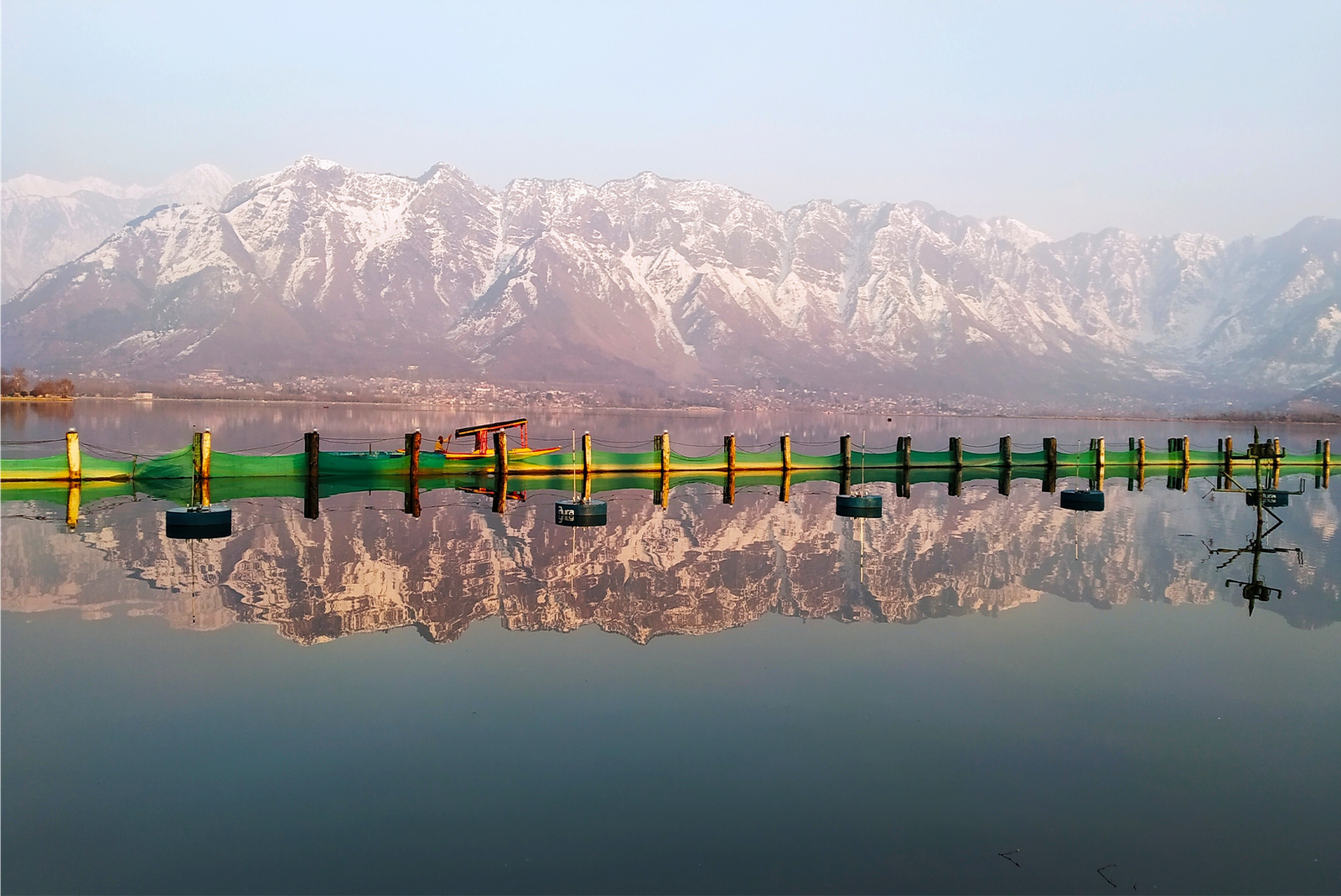
Srinagar, with its blend of natural beauty and cultural richness, invites travelers to unravel its secrets. Every experience you have in Srinagar, be it cruising Dal Lake, touring historic shrines or traveling through Mughal gardens, is a brushstroke in the masterpiece that is Kashmir. Wandering through its charming streets, Srinagar shows itself to be a place that transcends the ordinary and leaves a lasting impression on each traveler’s soul.
Located in the beautiful Kashmir Valley, Srinagar skillfully combines the enticement of its houseboats, the peace and quiet of its lakes and the majesty of its Mughal gardens. As you travel through this enchanted city, Srinagar will reveal itself to be a rich and beautiful tapestry of cultures. Let’s explore the must-visit places that make Srinagar a gelm in the crown of Jammu and Kashmir. Let’s explore the 18 Best Places to visit in Srinagar, must-visit places that make Srinagar a gem in the crown of Jammu and Kashmir.
Table of Contents
1. Dal Lake
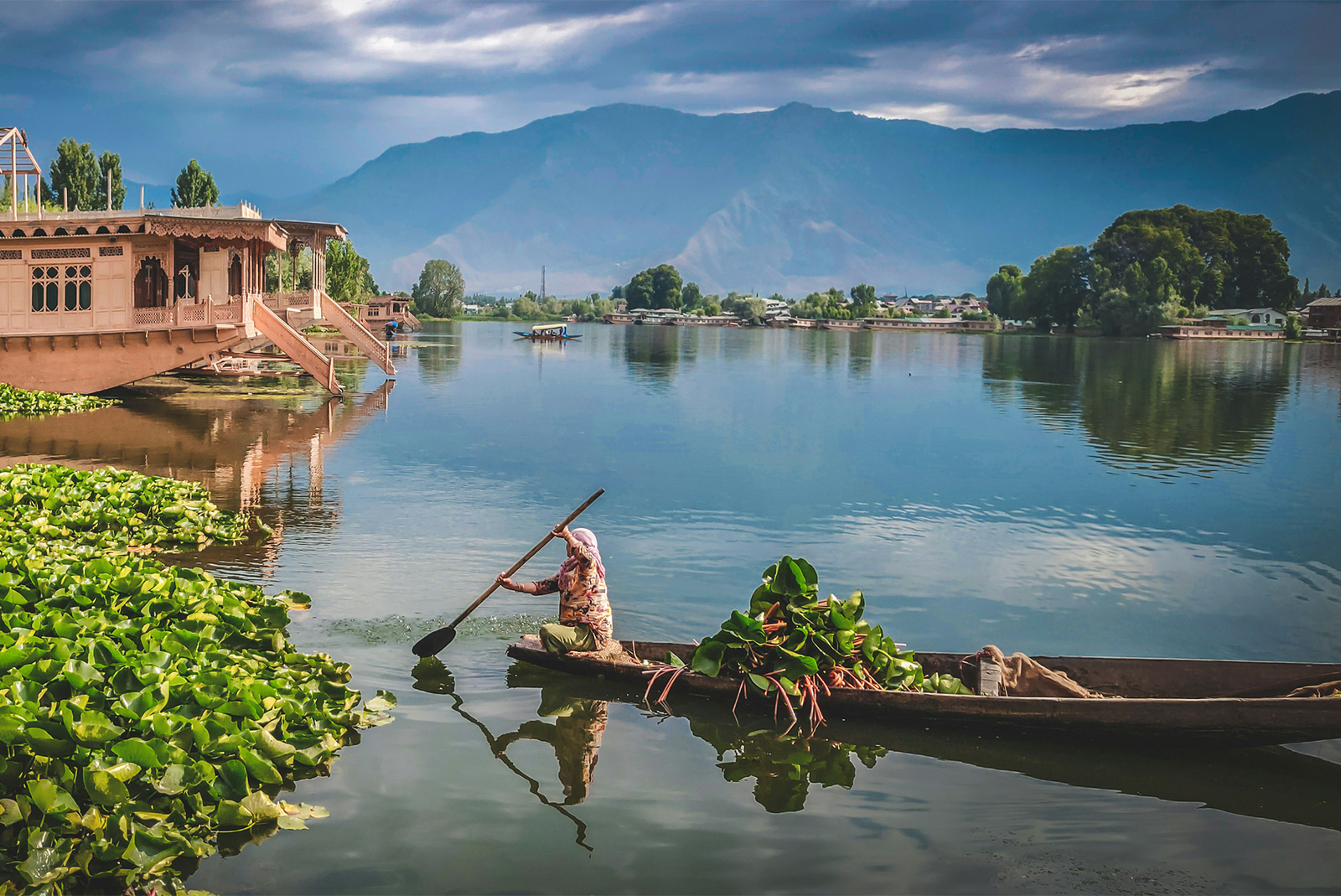
Dal Lake, often referred to as the “Jewel in the crown of Kashmir,” is a vast, mirror-like expanse of water surrounded by majestic mountains and lush Mughal gardens. The classic wooden boats known as shikaras glide across the lake with grace, bringing a bit of Kashmir’s rich history with them. During your Shikara ride, you’ll pass by floating markets where sellers display a bright variety of flowers, handicrafts and regional specialties.
Dal Lake’s famous houseboats that adorn its shores are instantly recognizable. These floating homes provide a distinctive and engaging lodging experience. Imagine waking up to the sound of the gentle waves crashing against the houseboat, enjoying a cup of Kashmiri Kahwa while watching the Himalayan peaks turn pink and gold as dawn breaks.
Through its floating markets, particularly the thriving Dal Lake Vegetable Market, Dal Lake comes to life. Take in the unusual sight of vendors offering a wide variety of fresh produce, flowers and even handicrafts on Shikaras. It’s a visual feast and a great way to interact with the lively local way of life.
Tips for Your Dal Lake Experience:
- Shikara Ride: Don’t miss a Shikara ride; it’s the best way to absorb the beauty of Dal Lake.
- Houseboat Stay: Consider staying in a houseboat for an immersive experience.
- Mughal Gardens: Set aside time to explore the Mughal Gardens for a tranquil escape.
- Seasonal Variation: Visit during different seasons to witness the lake’s changing moods.
2. Hazratbal Shrine

Hazratbal Shrine, also known as the “Shrine of the Lady,” is a revered Muslim site in Kashmir. The shrine attracts both pilgrims and visitors looking for comfort and spiritual enlightenment because it is home to a relic thought to be the Prophet Muhammad’s hair.
The mosque’s architecture is a visual wonder, combining Kashmiri and Islamic design elements. A picture of ethereal beauty is created as the immaculate white marble structure reflects in Dal Lake’s waters. The elaborate calligraphy adorning the shrine’s exterior and the majestic dome serve as testaments to the skill of Kashmiri artisans.
Encircled by the Zabarwan Range, Hazratbal Shrine is situated in an attractive spot on the northern edge of Dal Lake. The peaceful placing created by the lake’s shimmering waters makes it a peaceful haven for devotees and guests looking to take a moment to reflect.
Hazratbal is visited by devotees from all walks of life who come to pray and ask for blessings. The shrine is especially significant religiously, especially on holidays like Eid, when it serves as the hub for religious events and gatherings.
Tips for Your Visit:
- Respectful Attire: Visitors are advised to dress modestly as a sign of respect.
- Photography: Capture the architectural beauty but be mindful of the religious sanctity.
- Local Interaction: Engage with locals to gain insights into the cultural significance of the shrine.
3. Jamia Masjid
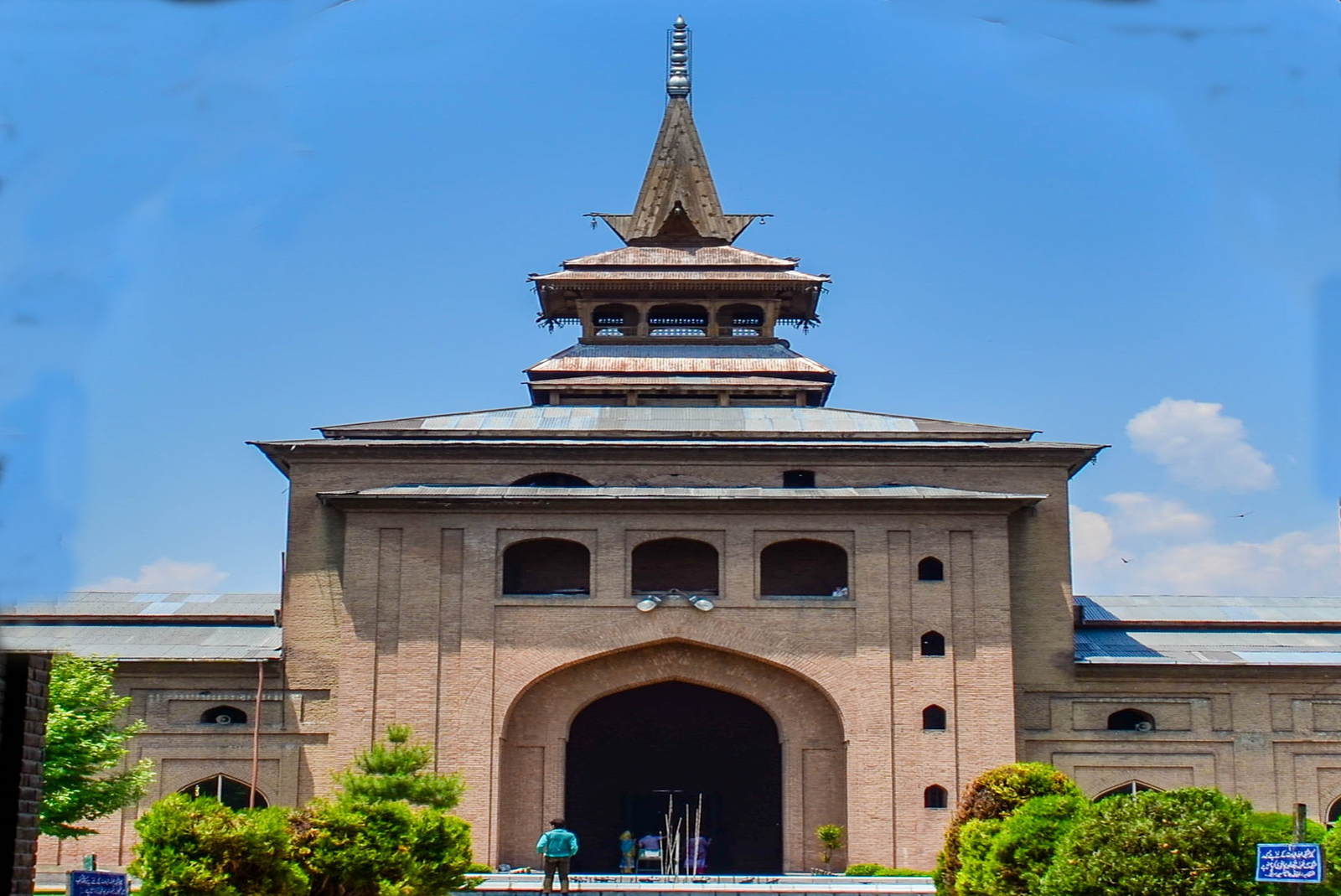
Jamia Masjid is a masterpiece of Indo-Saracenic design Built by Sultan Sikandar in the fourteenth century . The mosque is a striking example of a fusion of Persian and Central Asian architectural styles with its tall spires and finely carved wooden details.
Jamia Masjid serves as the main mosque for the people of Srinagar and holds religious significance for the Muslim community in the region. Thousands of worshippers can fit in its large courtyard, which fosters a spirit of unity and devotion during prayer times. Inside its walls, the mosque has seen hundreds of years of Kashmiri history take place. Jamia Masjid has been a silent witness to the passing of time, from royal decrees to public gatherings, making it a living history of the area.
The mosque’s history was significantly influenced by the well-known saint Mir Sayyid Ali Hamadani, popularly known as Shah Hamdan. His efforts to introduce Islam to Kashmir left a lasting impression and the mosque grew to be a hub for religious and cultural events as a result of his influence.
Tips for Your Visit:
- Respectful Attire: Visitors are advised to dress modestly when entering the mosque.
- Photography: Capture the architectural details but be mindful of worshippers’ privacy.
- Visit Timing: Plan your visit during non-prayer times to explore the mosque freely.
4. Chashme Shahi Garden

The Royal Spring or Chashme Shahi, is a garden that attracts tourists with its verdant leaves, revitalizing spring and architecture with Mughal influences. Situated only a short drive from Srinagar, this hidden gem provides a peaceful escape from the daily bustle in addition to a visual feast.
One of the three Mughal gardens that face Dal Lake is Chashme Shahi, constructed in 1632 by Mughal Emperor Shah Jahan. The Mughals’ love of symmetry, geometric patterns and the incorporation of water features is evident in the garden’s design.
The natural spring at Chashme Shahi, which is thought to have beneficial qualities, is its main attraction. The sound of the clear water crashing through the terraced stone basins is calming and contributes to the garden’s overall peace.
The grandeur of the Mughal era is reflected in Chashme Shahi’s architectural design. Pavilions, arched doorways and elaborate chhatris in the Mughal style adorn the garden, combining man-made and natural beauty in a harmonious whole.
Visit Tips:
- Timing: Visit during the spring and summer months for the best experience.
- Footwear: Consider wearing comfortable shoes for exploring the terraced levels.
- Picnic: Pack a picnic and enjoy a leisurely meal amidst the scenic surroundings.
5. Floating Vegetable Market

Explore a world where tradition dances on the shimmering waters of Srinagar’s Dal Lake, where commerce and peace coexist. The vibrant spectacle that is the Floating Vegetable Market, exclusive to Kashmir, is more than just a market place; it is an ancient custom that combines the spirit of local trade with the beauty of the natural world.
A symphony of colors opens up as the sun’s first rays touch Dal Lake’s surface. The lake is converted into a floating bazaar as shikaras, traditional wooden boats decorated with a rainbow of vegetables, sail across the water.
In Srinagar, the Floating Vegetable Market is a centuries-old custom that is intricately woven into Kashmiri culture. It’s more than just a market place; it’s a way of life where nearby farmers negotiate the complex system of waterways to display and sell their seasonal goods.
The vegetables sold at the Floating Market are not only visually appealing but also exceptionally fresh. These veggies are harvested from the lush lands surrounding Dal Lake and are often organic, providing both locals and visitors with a farm-to-table experience.
6. Yusmarg
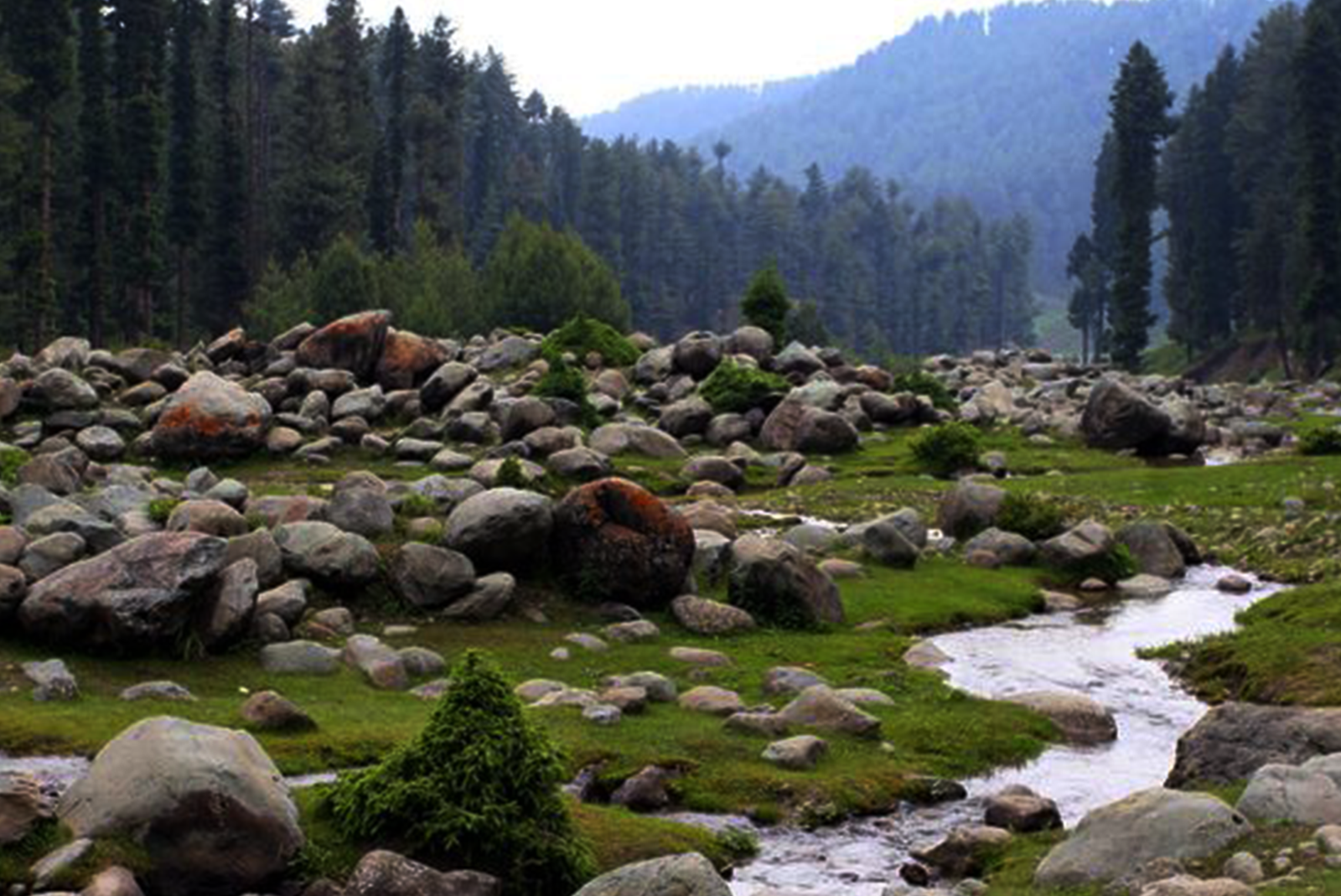
Yusmarg is a hidden gem in the Kashmir valley, situated in the Pir Panjal range of the Himalayas. This flawless meadow, located away from the busy tourist routes, is a nature lover’s dream come true, providing an oasis of peace and a window into the unspoiled beauty of the Kashmiri countryside.
Translating as “The Meadow of Jesus,” Yusmarg is a calm expanse of verdant meadows encircled by dense forests of coniferous and pine trees. Every visitor is immediately drawn in by the soothing atmosphere of calmness created by the crisp mountain air and the chorus of singing birds.
The charming Yusmarg Lake, which reflects the surrounding hills and the blue sky is the focal point of this dreamlike retreat. Embracing the natural beauty that Yusmarg has to offer, boating on the lake is a peaceful experience.
For a magical end to your day, head to the Sunset Point in Yusmarg. The whole meadow is bathed in shades of orange and pink as the sun starts to set behind the majestic peaks, producing an amazing the spot. It’s the ideal place to take stock of the day and appreciate the beauty of nature all around you.
Natural beauties like Nilnag, a beautiful blue lake covered by grasslands and Doodh Ganga, a pure river renowned for its milky-white water, adorn Yusmarg. These locations provide an oasis of peace from the busier tourist hotspots.
7. Shalimar Bagh

Shalimar Bagh stands as a testament to the opulence and artistic brilliance of the Mughal era. Since the Mughal Emperor Jahangir created the famous garden, also known as Shalimar Gardens for his wife Noor Jahan in 1619, it has stood as an example to beauty and peace of mind. This is a peek of the history and charm that make Shalimar Bagh a must-see location.
As you enter Shalimar Bagh, you are immediately captivated by the meticulous layout and design that characterize Mughal gardens. The garden is set up on three terraces that rise above one another and are decorated with elaborate fountains, cascading water channels and well-kept flower beds. The garden’s symmetrical design is a reflection of the Persian idea of “char bagh,” or four gardens.
The majestic Chinar tree, with its shadowy branches offering relief to tired tourists is the focal point of Shalimar Bagh. Through its enormous vibrant leaves, the Chinar has come to represent Kashmir and its existence lends a sense of organic magnificence to the meticulously constructed Mughal structures.
The garden comprises three terraces called Diwan-i-Aam, Diwan-i-Khas and the third terrace which was formerly the emperor’s personal house. Every terrace is unique, combining colorful flower beds, well-kept lawns and soothing water features to create a peaceful ambiance.
Shalimar Bagh is home to several beautiful fountains and falling streams that not only add to the garden’s visual appeal but also function as functional irrigation systems for the whole area. During your leisurely stroll, the sound of the gently flowing water through the channels provides a calming soundtrack.
The Black Pavilion sometimes known as the Black Throne, is one of Shalimar Bagh’s most recognizable buildings. This pavilion made of black marble functioned as a royal gathering place for the emperor to meet with his courtiers and visitors. The marble’s beautiful detailing showcases the Mughal artisans’ exceptional craftsmanship.
8. Pari Mahal
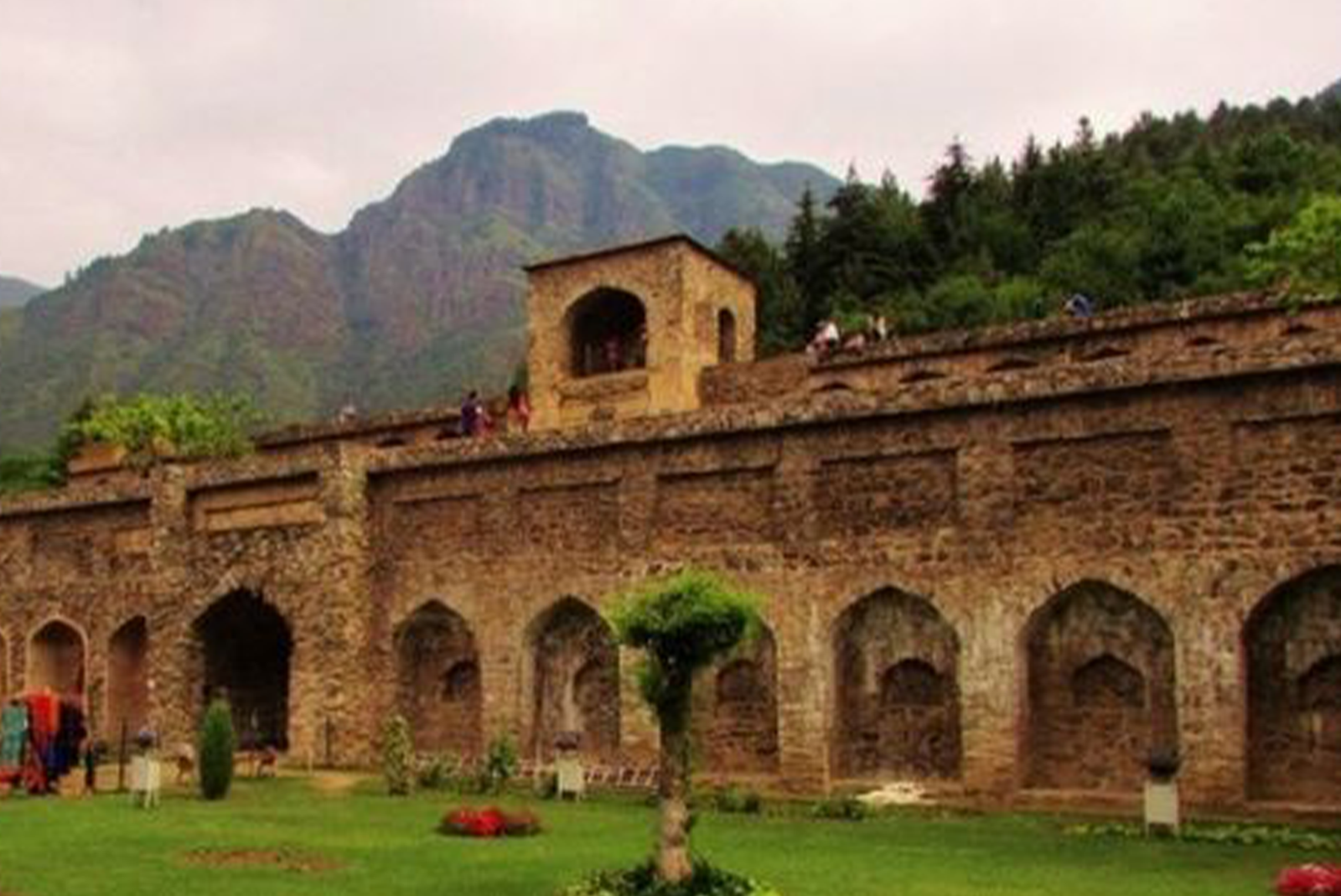
Kashmir’s rich cultural legacy and architectural magnificence are exemplified by Pari Mahal also known as the “Palace of Fairies,” which is situated on the Zabarwan Range and overlooks the captivating Dal Lake. This historic site which blends Persian and Islamic architectural styles, welcomes guests to stroll around its peaceful terraced gardens and experience the charm of a bygone era. Here’s some of the charm and background that make Pari Mahal one of Srinagar’s must-see locations.
Pari Mahal, built during the mid-17th century, showcases a distinctive blend of Islamic and Persian architectural styles. Through their colorful flower arrangements and stunning views of Dal Lake, the seven terraced gardens form an exciting visual symphony. The architectural grandeur is enhanced by the use of arched doorways, intricately designed walls and expansive views from each terrace.
Originally constructed as a home for Mughal Prince Dara Shikoh, Pari Mahal later functioned as his spiritual advisor, the Sufi saint Mulla Shah,’s observatory and teaching center. This site’s historical significance adds another level of significance, giving visitors a window into the intellectual and cultural exchanges that defined Kashmir’s Mughal era.
9. Mughal Road
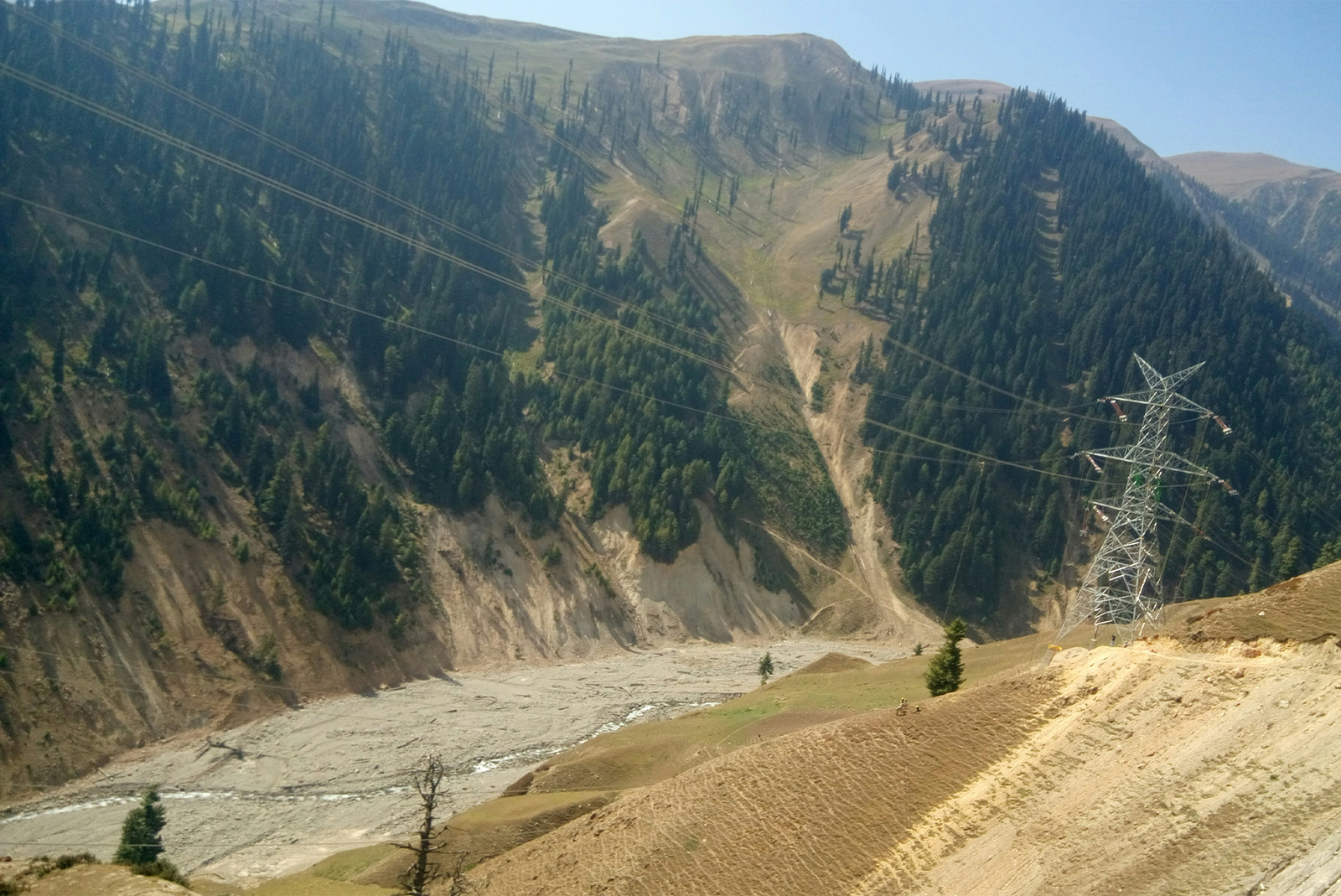
Mughal Road, which is hidden away in Jammu and Kashmir’s beautiful landscape is a monument to both the amazing modern beauty and the historical engineering feats. This ancient route, which links Srinagar and Poonch/Rajouri follows in the footsteps of the Mughal emperors and provides visitors with an unmatched fusion of history & culture.
The Mughal Road was initially built as a crucial trade route between the plains of the Indian subcontinent and the Kashmir Valley by Emperor Akbar in the sixteenth century. The road which wound its way through thick forests and winding valleys was frequented by Mughal caravans carrying spices, silk and other expensive items.
The Mughal Road offers visitors of today a visual feast of snow-capped mountains, verdant meadows and pure rivers. The road curves through the Pir Panjal mountain range, providing sweeping views that transform with the seasons from a winter wonderland covered in snow to a springtime bloom of flowers.
10. Shankaracharya Temple

Shankaracharya Temple, also known as Jyeshteshwara temple stands as a testament to the rich cultural and spiritual heritage of Kashmir. Shankaracharya Temple, which dates to the ninth century is deeply rooted in Kashmir’s past. This temple was supposedly built by Emperor Ashoka’s son Jaluka. Later on it was linked to the renowned philosopher Adi Shankaracharya which added more historical layers to its hallowed grounds.
Every visitor falls in love with the temple’s architecture which is a masterful blend of Hindu and Persian design. Decorated with develop carvings, the temple’s octagonal structure and lofty spire make it an architectural marvel that appeals to both architecture enthusiasts and devotees.
The Shankaracharya Temple is a spiritual haven as well as a physical building for religious Hindus. A Shiva Lingam representing Lord Shiva’s divine presence is kept in the sanctum. The calm atmosphere provides comfort to pilgrims, making it a must-visit location for anyone looking for a boost spiritually.
During festivals, especially Shankracharya Jayanti and Maha Shivaratri, the temple comes to life. Both pilgrims and visitors take part in the festivities which give the temple’s spiritual atmosphere a vibrant new color.
11. Nishat Bagh
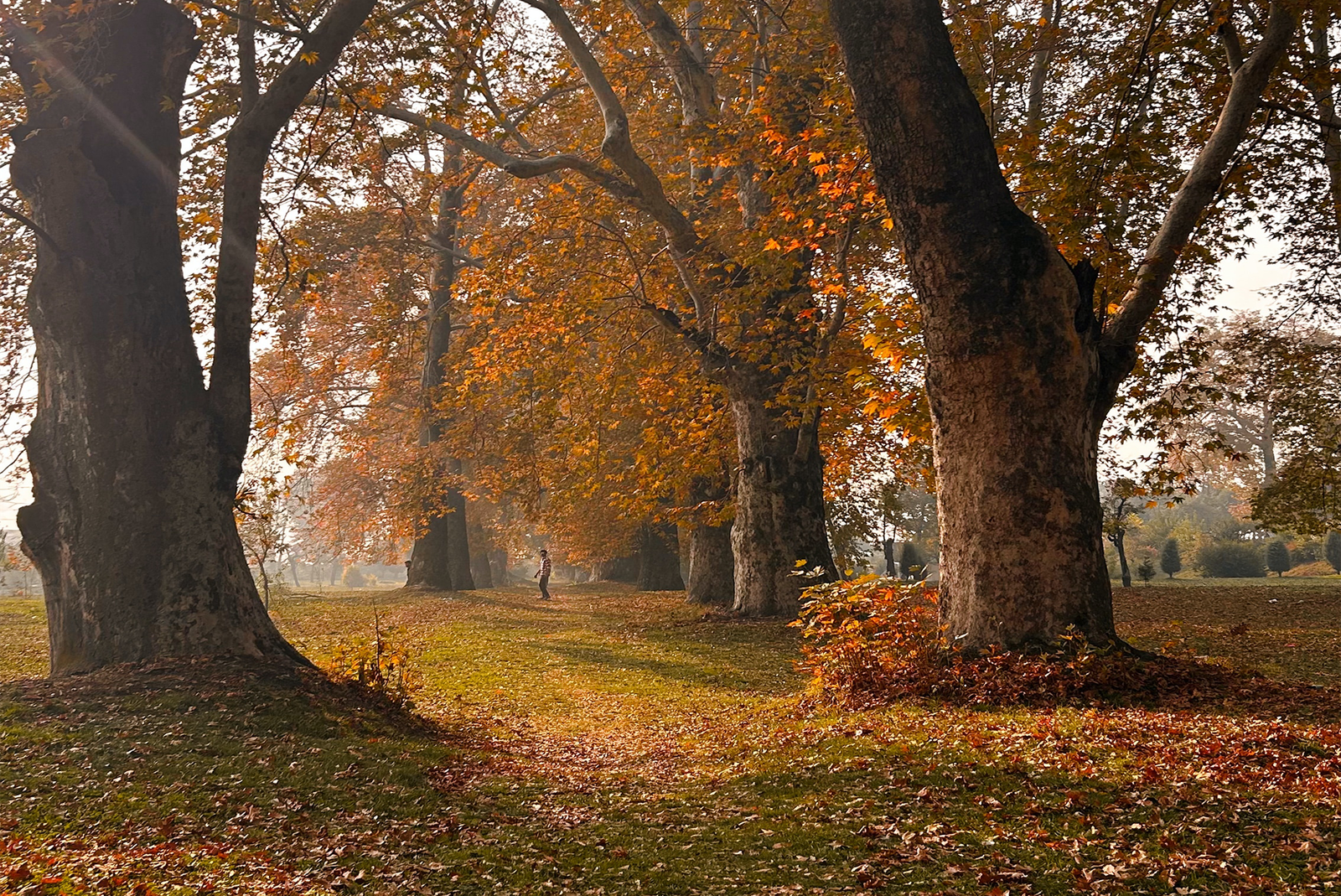
Nishat Bagh translating to “Garden of Joy,” stands as an exquisite testament to the grandeur of Mughal horticulture in the heart of Srinagar, Jammu and Kashmir. It is a part of the larger collection of Mughal Gardens that dot the Kashmiri landscape. This garden embodies the architectural elegance of the Mughal era, transforming it from an ordinary landscape into a dynamic historical painting.
Nishat Bagh is unique because of its stunning terraced design. The garden has twelve descending terraces that lead to Dal Lake’s shores, each representing a sign of the zodiac. Strolling through the lush expanse reveals a visual spectacle created by the carefully planned waterfalls.
Nishat Bagh is adorned with pavilions, fountains, and intricately designed flowerbeds. Through its twelve columns, the baradari a pavilion in the center, provides stunning views of the surroundings. When touring the architectural wonders of the garden, visitors are taken back in time to a time of great splendor.
Nishat Bagh, with its terraced splendor and historical charm, beckons travelers to step into a bygone era of regal aesthetics. Amidst Dal Lake’s attraction, Nishat Bagh promises an enchanting experience for anyone interested in history, nature or a peaceful getaway.
12. Hari Parbat

Hari Parbat, standing proudly on the hills of the Sharika Peeth, is not merely a fortress; it’s a testament to the cultural and historical richness of Kashmir. Hari Parbat, also known as Koh-e-Maran, is steeped in history that dates back to ancient times. Under Shuja Shah Durrani’s rule, the fort’s construction, which had been started in the 18th century by Afghan Governor Ata Muhammad Khan, was completed. The strategic location of the fort offers expansive views of the surrounding mountains, Dal Lake and Srinagar.
A place of great religious significance, the holy Sharika Peeth stands on Hari Parbat. Religious visitors flock to the temple honoring Goddess Sharika, who is thought to be a manifestation of Goddess Durga. One moving example of Kashmir’s harmonious culture is the existence of a Muslim shrine, a Sikh Gurudwara and a Hindu temple on the same hill.
The complex of defenses combines Mughal and Persian architectural elements, featuring elaborately carved entrances and walls. The building’s grandeur is enhanced by the imposing outer walls, bastions and the recognizable Pathar Masjid. Noor Jahan built the Pathar Masjid which is a magnificent example of Kashmiri woodwork.
As a guardian, Hari Parbat protects Kashmir’s spiritual and cultural legacy. Beyond its architectural and historical significance, the fort represents the persistent spirit of harmony that has characterized the area for many years. A trip to Hari Parbat is an experience that immerses one in Kashmir’s spirit rather than merely transporting them back in time.
13. Sonamarg
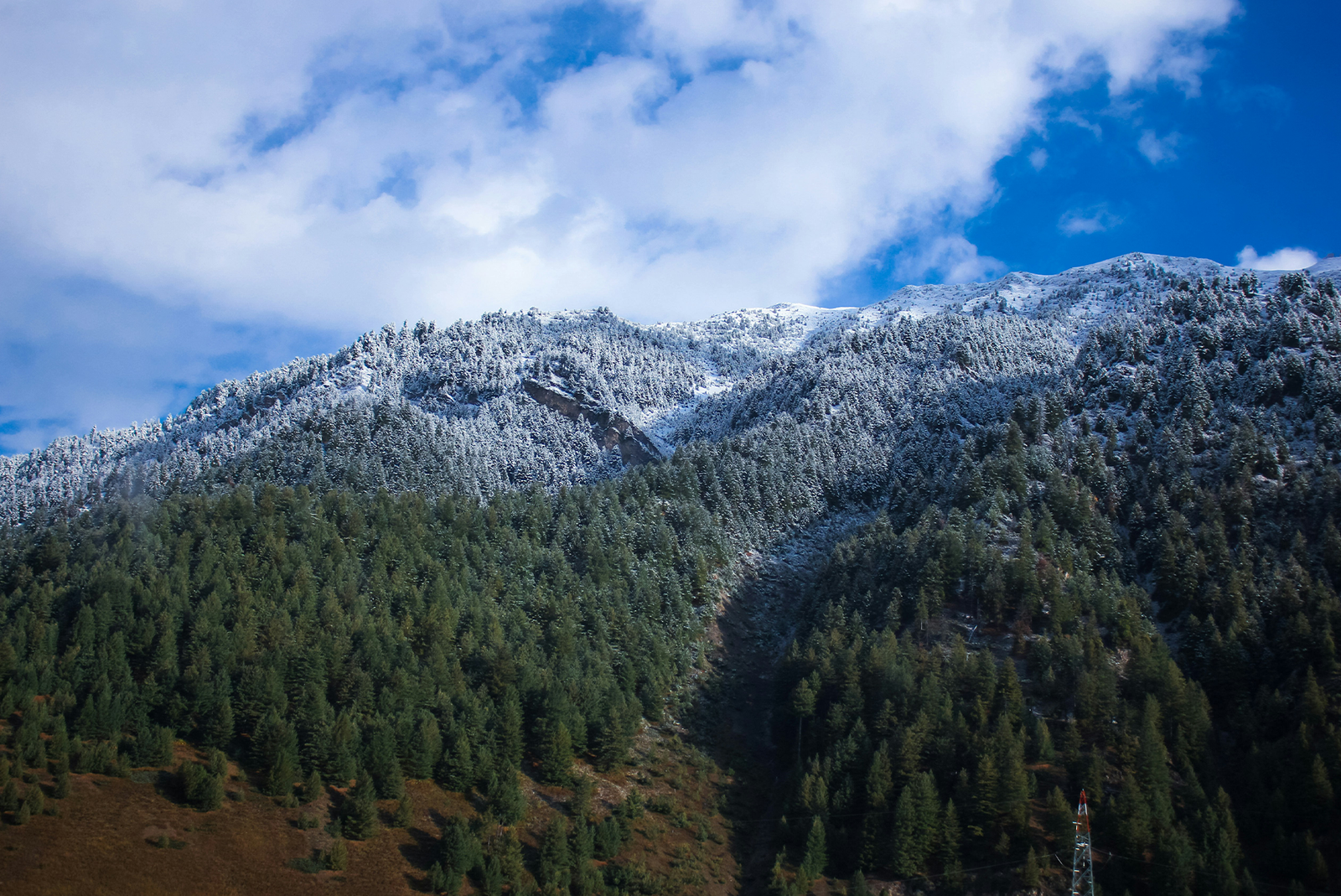
Sonamarg, literally translating to “Meadow of Gold,” is a pristine destination that unfolds like a dream. It is surrounded by imposing snow-capped peaks, alpine meadows and shimmering glaciers, is a paradise for those who love the outdoors and the great outdoors.
At 2,800 meters above sea level, Sonamarg boasts a landscape that appears to have been hand-painted by Mother Nature. A stunning location is created by lush meadows blanketed in a carpet of wildflowers, deep forests and the meandering Sindh River.
Sonamarg offers an array of adventure activities for the thrill-seekers. A trek or pony ride will get you to the Thajiwas Glacier which is the entrance to a winter wonderland. Trekking, camping, fishing and white-water rafting are among the activities available to visitors on the erratic Sindh River.
The crystal-clear waters of the Sindh River meander through Sonamarg, giving the entire area a calming backdrop. For those seeking peace and quiet, the numerous alpine lakes—Krishnasar, Vishansar and Gangbal, among others—mirror the surrounding snow-capped peaks.
Sonamarg is a major starting point for the famous Amarnath Yatra pilgrimage. In addition to being a religious pilgrimage, the journey to the hallowed Amarnath Cave, where an ice Shiva Lingam naturally forms.
14. Nigeen Lake
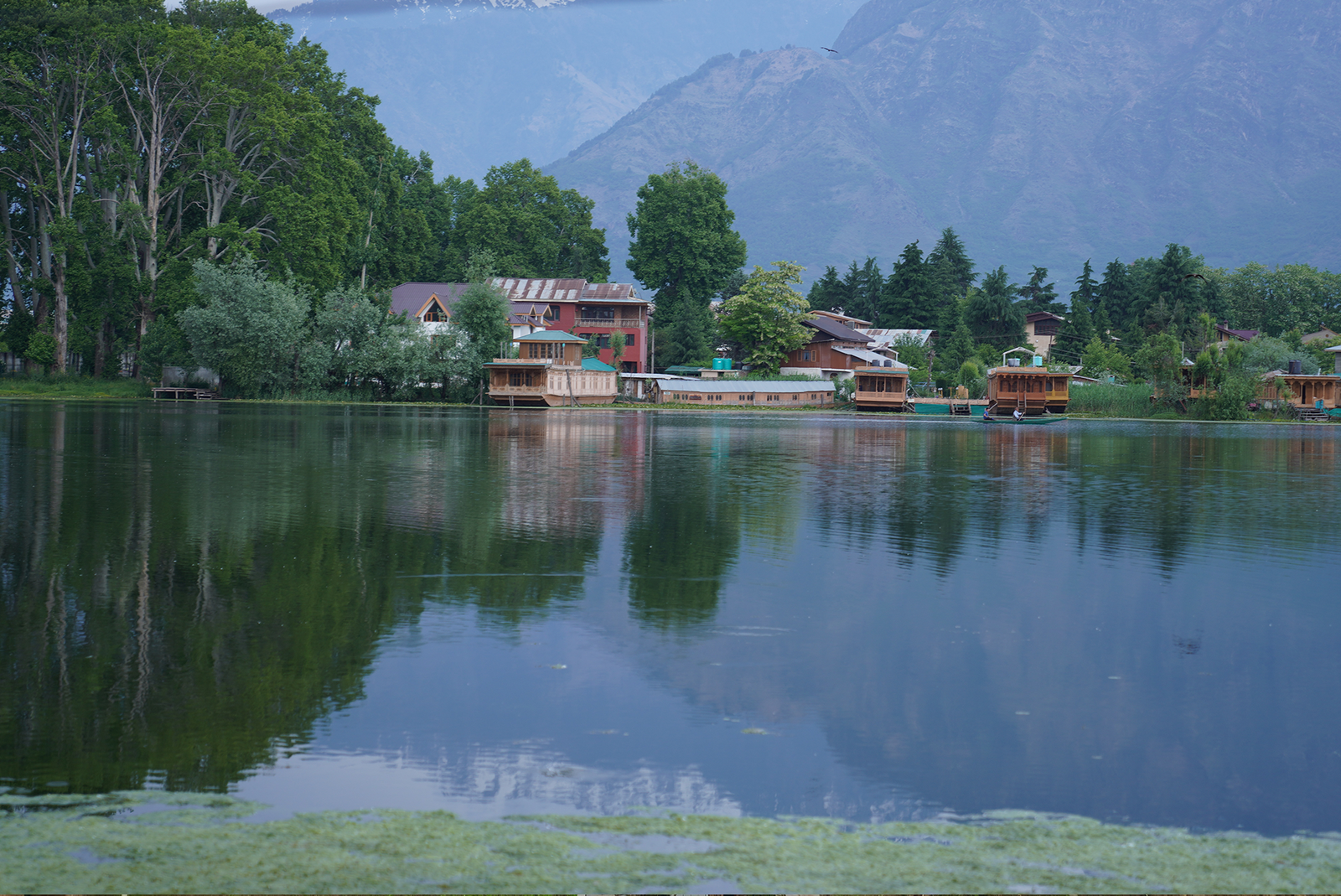
Nigeen Lake, a hidden jewel nestled in the heart of the Kashmir Valley, stands as a testament to the unparalleled beauty that defines this region. Travelers looking for a quiet and unconventional getaway are attracted to Nigeen Lake because of its distinct charm and peace which frequently gets overwhelmed by Dal Lake, its more well-known counterpart.
Nigeen Lake is a remote paradise hidden away from the busy crowds, encircled by lush vegetation and the majestic peaks of the Zabarwan Range. The lake’s immaculate waters reflect the blue sky, producing a mesmerizing picture that shifts in color as the sun moves across the sky.
Staying on a houseboat that floats calmly on Nigeen Lake’s peaceful waters is a great way to capture the essence of Kashmir’s attraction. Enjoy a leisurely Shikara ride, cruising by floating gardens and taking in the calm atmosphere that sets Nigeen apart from its more popular counterpart. A must-do experience is taking a boat ride to Char Chinar Island which is situated in the center of Nigeen Lake. Four magnificent Chinar trees adorn the island, producing a lovely the spot.
15. Anchar Lake

Anchar Lake presents itself as a hidden treasure just waiting to be found by those looking for peace and quiet away from the well-traveled routes. The busy life of Srinagar, a nearby city, is very different from Anchar Lake. The lake offers an oasis of peace despite being in the middle of the city, drawing in both residents and visitors looking for a quiet getaway.
Enjoy an easy Shikara ride to fully immerse yourself in the peace of Anchar Lake. Travel on along the peaceful waters while admiring the expansive vistas of the neighboring hills. As an alternative, stroll along the serene promenade to discover the lakeside and let the calm atmosphere delight your senses.
Anchar Lake is a prime example of the value of environmental preservation and ecotourism. In order to ensure that future generations can also enjoy the unspoiled beauty that characterizes this natural wonder, visitors are urged to respect and preserve the lake’s delicate ecosystem.
Anchar Lake is a prime example of Kashmir’s numerous aspects, combining the excitement of the city with the peace and quiet of the countryside. Anchar Lake presents itself as an attractive location for those looking for a peaceful getaway in the arms of nature, allowing visitors to experience the harmonious coexistence of city life and unspoiled peace.
16. Indira Gandhi Memorial Tulip Garden

The Indira Gandhi Memorial Tulip Garden is open to the public only in the spring, usually from late March to early April when it bursts into vibrant color. The garden becomes a captivating display as winter fades, highlighting the beauty of tulips in a range of colors.
The garden is one of the biggest in Asia, spanning a vast terrain. Rows upon rows of carefully manicured tulip beds greet visitors, producing a visual feast that draws in tourists, nature enthusiasts and photographers equally.
The garden is home to a wide variety of tulip varieties, each of which adds a special charm to the overall color scheme. The tulips in the garden produce a kaleidoscopic scene that captivates the eye, ranging from traditional reds and pinks to rare and exotic colors.
Tulips, which are frequently associated with rebirth and spring, infuse the atmosphere with optimism. Through its seasonal bloom, the Indira Gandhi Memorial Tulip Garden becomes a symbol of hope, announcing the arrival of warmer days and the renewal of the natural world.
17. Doodpathri Budgam

Doodpathri opens up like a delicately painted canvas by the elements. The meadow, surrounded by snow-capped mountains and thick pine forests, is a peaceful retreat from the daily grind. The scent of wildflowers and the clean mountain air as soon as you walk in transport you to a peaceful place.
The streams that wind through the meadow are a characteristic that makes Doodpathri unique. The melting snow is the source of these glistening clear waters, which give the surrounding area a melodic quality. While taking in the calming sounds of nature, visitors frequently find comfort along the banks of the streams.
Beautiful views of the majestic Sheeshnag mountain can be seen from Doodpathri. Every visitor is left with a lasting impression by the meadow’s picture-perfect surroundings, which are framed by the snow-capped peaks. Particularly for photographers, the landscape is captivating.
Doodpathri Budgam invites visitors to take in the beauty of nature in all its simplicity with its picture-perfect meadows, shining streams and expansive vistas. Doodpathri promises an immersive and unforgettable journey into the heart of Kashmir’s natural wonders, whether you’re looking for adventure, peace or a chance to meet local culture.
18. Tulip Garden

The Tulip Garden comes to life during the spring season, typically from late March to early April. Thousands of tulips bloom during this time, transforming the surrounding area into a rainbow of colors including red, pink, yellow and purple. A stunning panorama is produced by the vibrant colors set against the Zabarwan Range.
The Tulip Garden is a masterwork of landscape architecture, spanning more than 30 hectares. The garden is carefully laid out into different areas, with distinct types of tulips growing in each. Visitors can immerse themselves in the beauty of these delicate flowers as they meander along winding pathways that lead them through a visual feast.
The Tulip Garden’s great location, which provides expansive views of the Zabarwan Range, is one of its distinctive features. The snow-capped mountains that form the background of the garden provide a striking contrast to the vibrant tulip blossoms as visitors wander through it.
Every year the Tulip Garden celebrates the blooming season with an annual Tulip Festival. The garden comes alive with musical performances, cultural events and a variety of activities to do during this time. The festival provides a window into Kashmir’s rich cultural past in addition to showcasing the beauty of the flowers.







